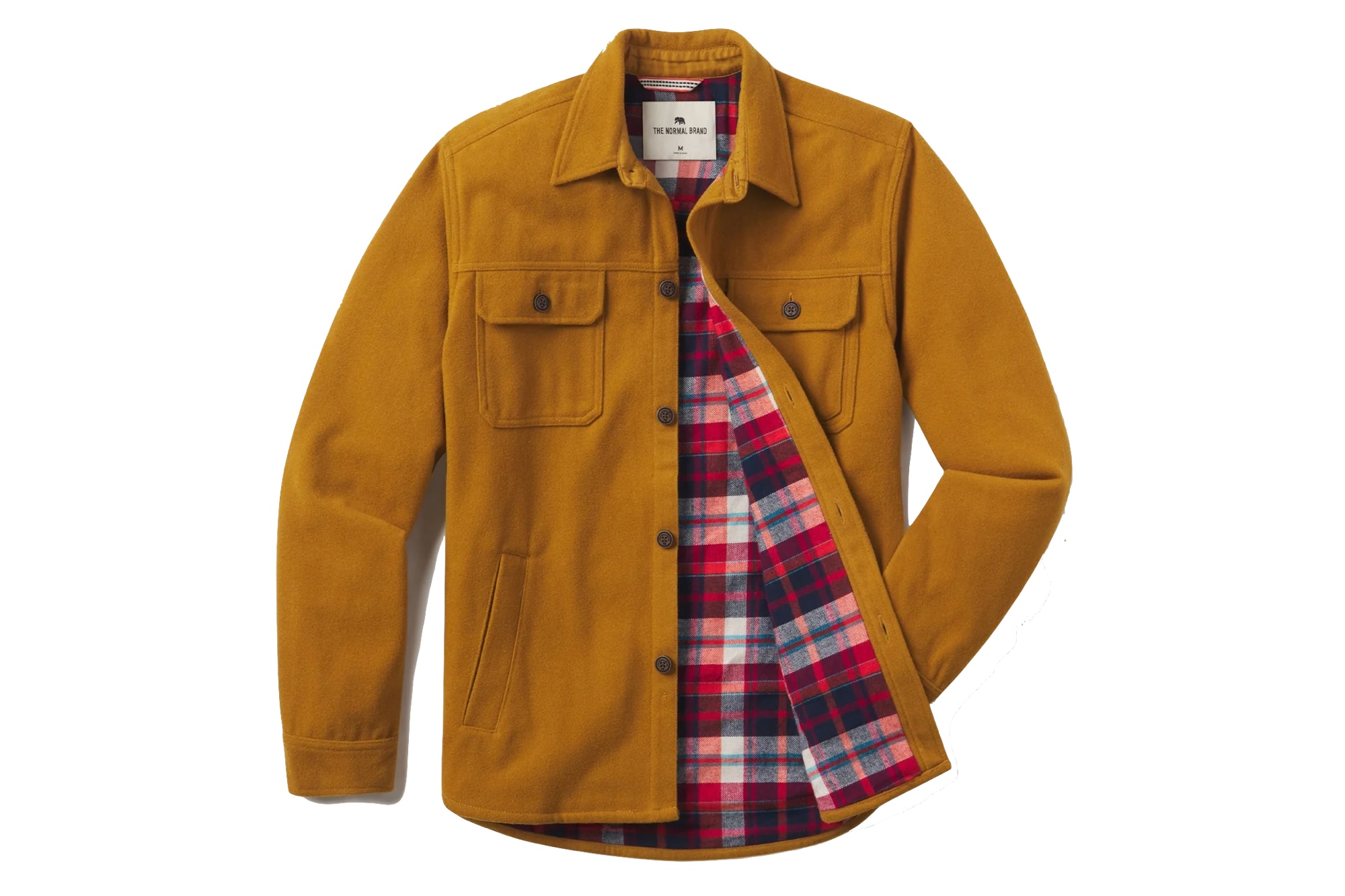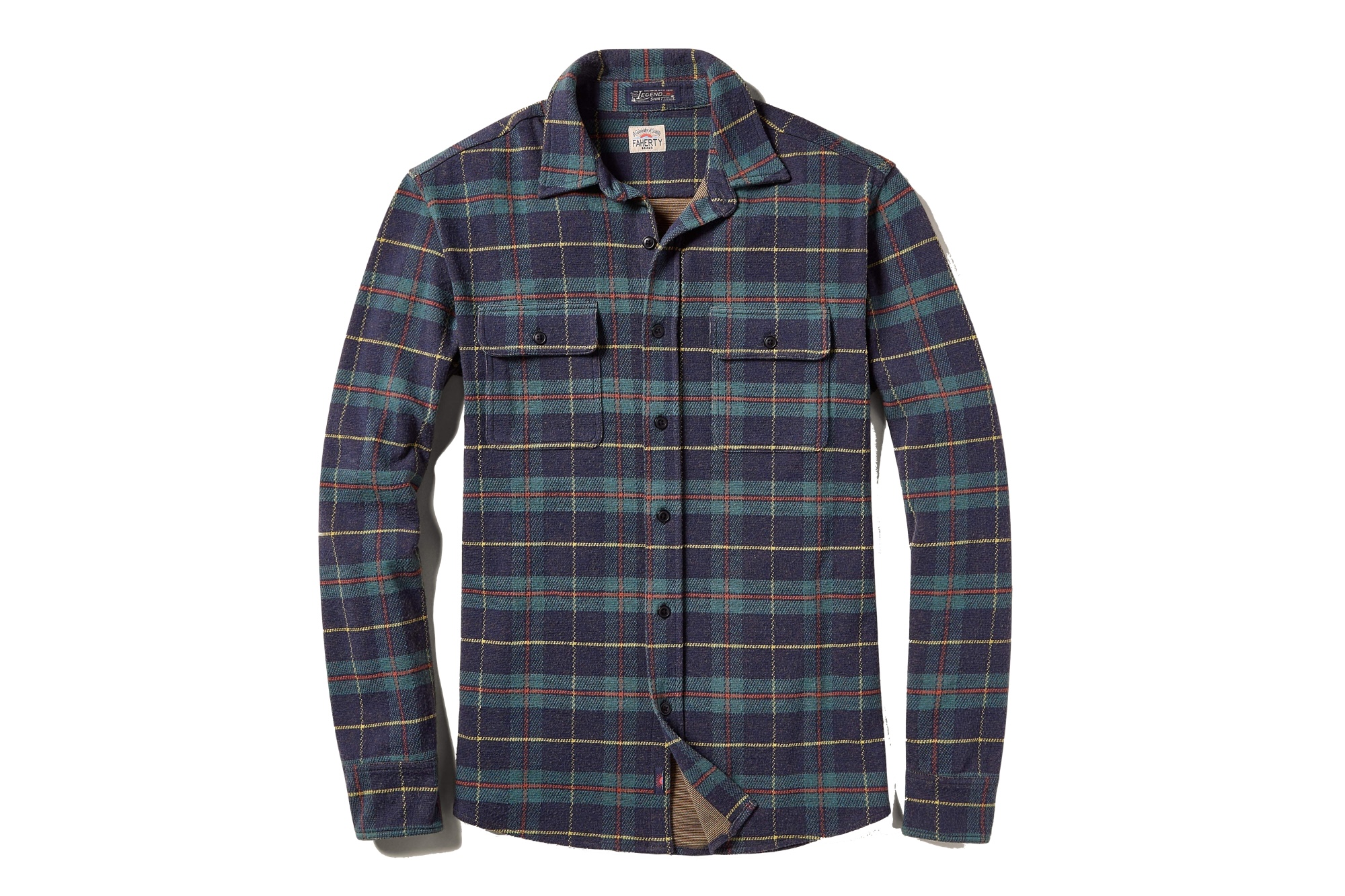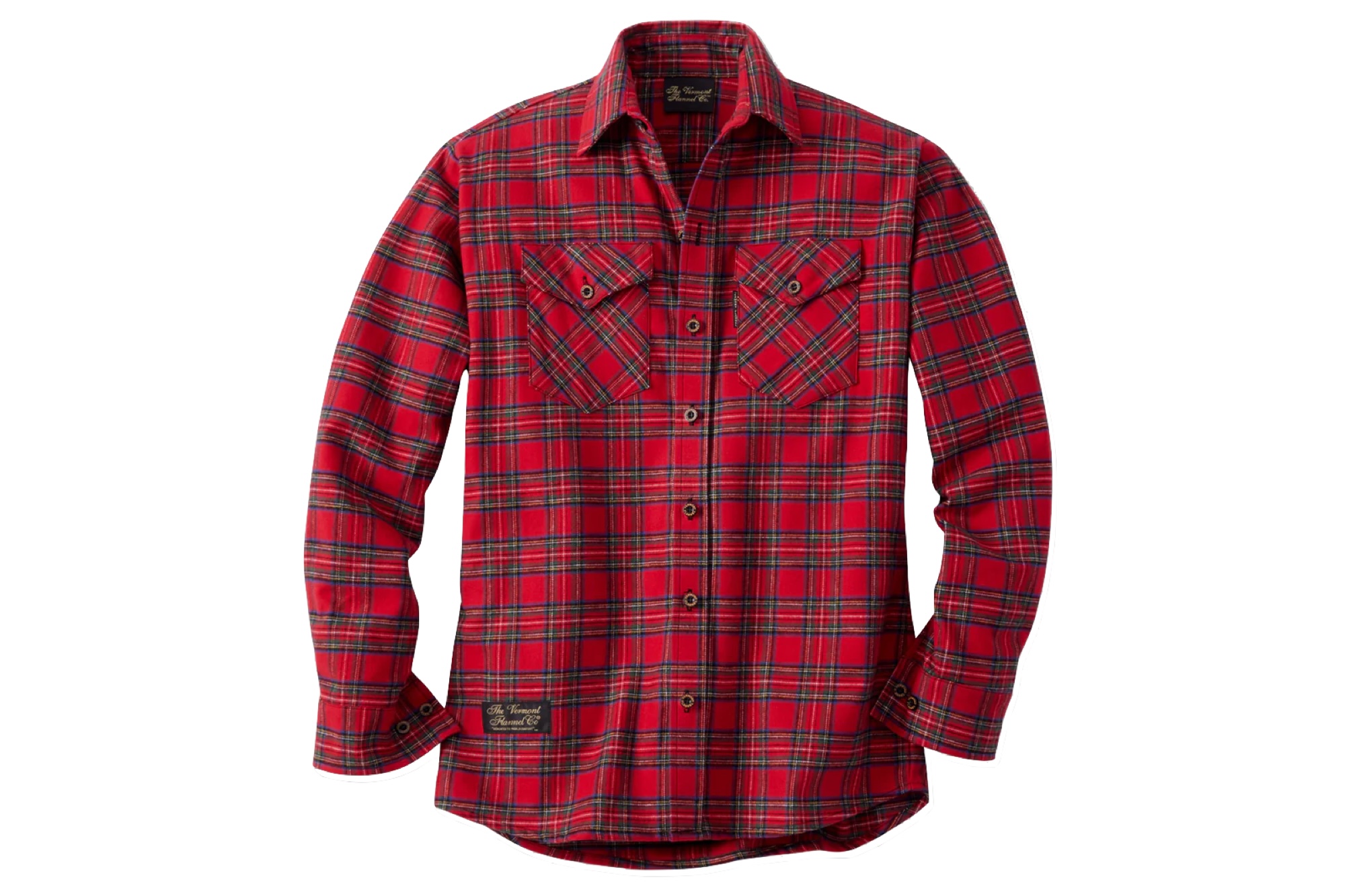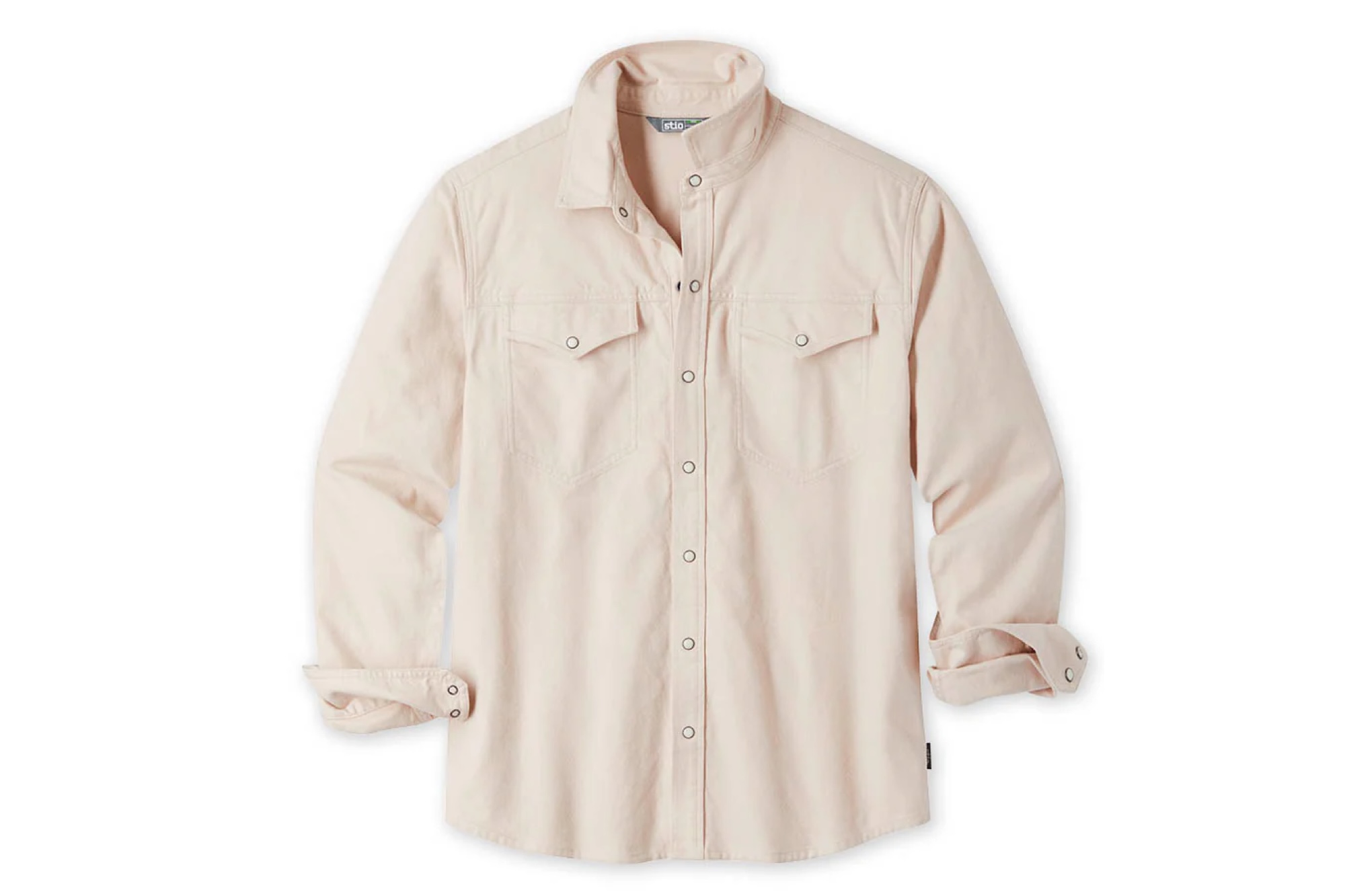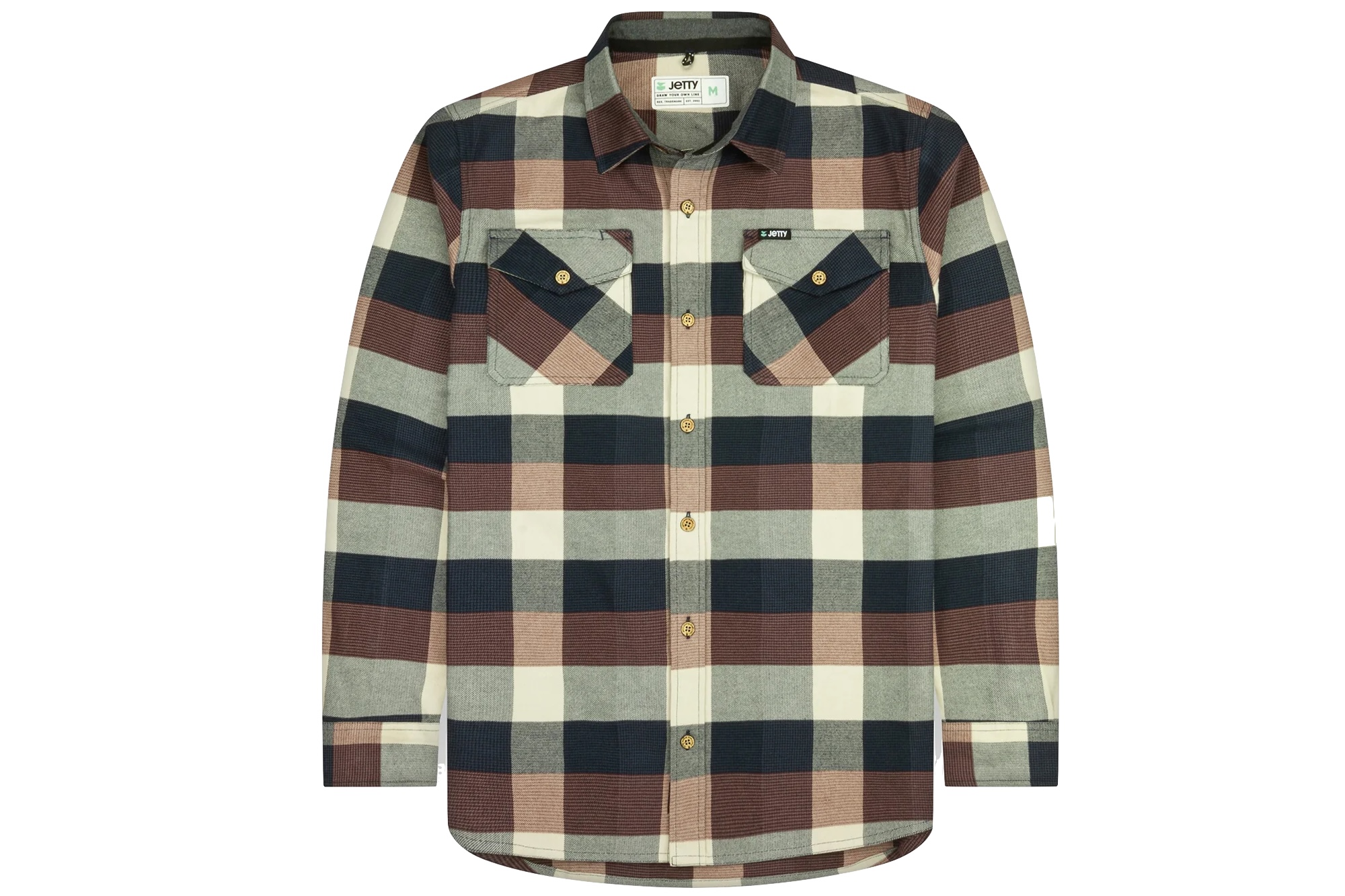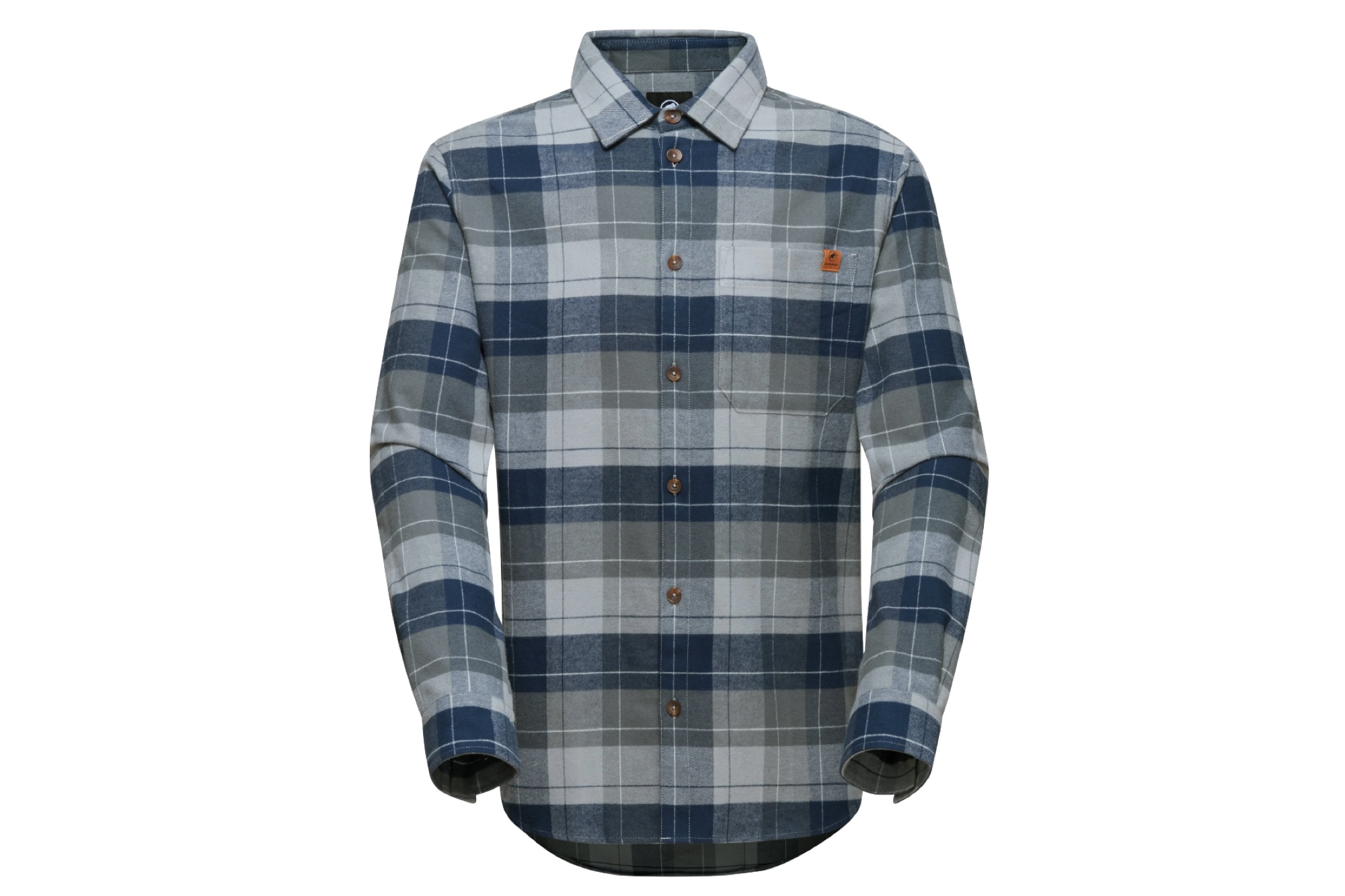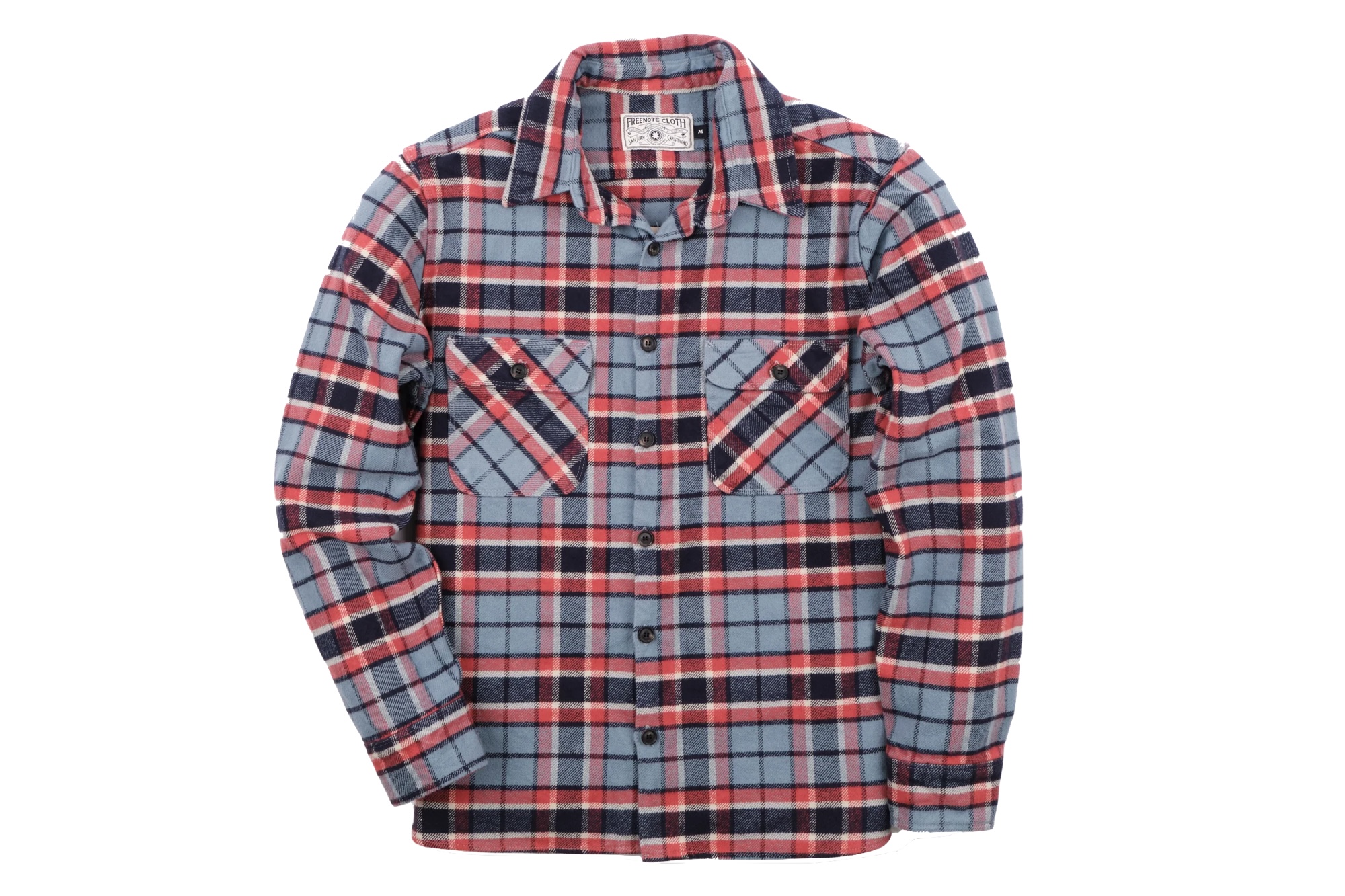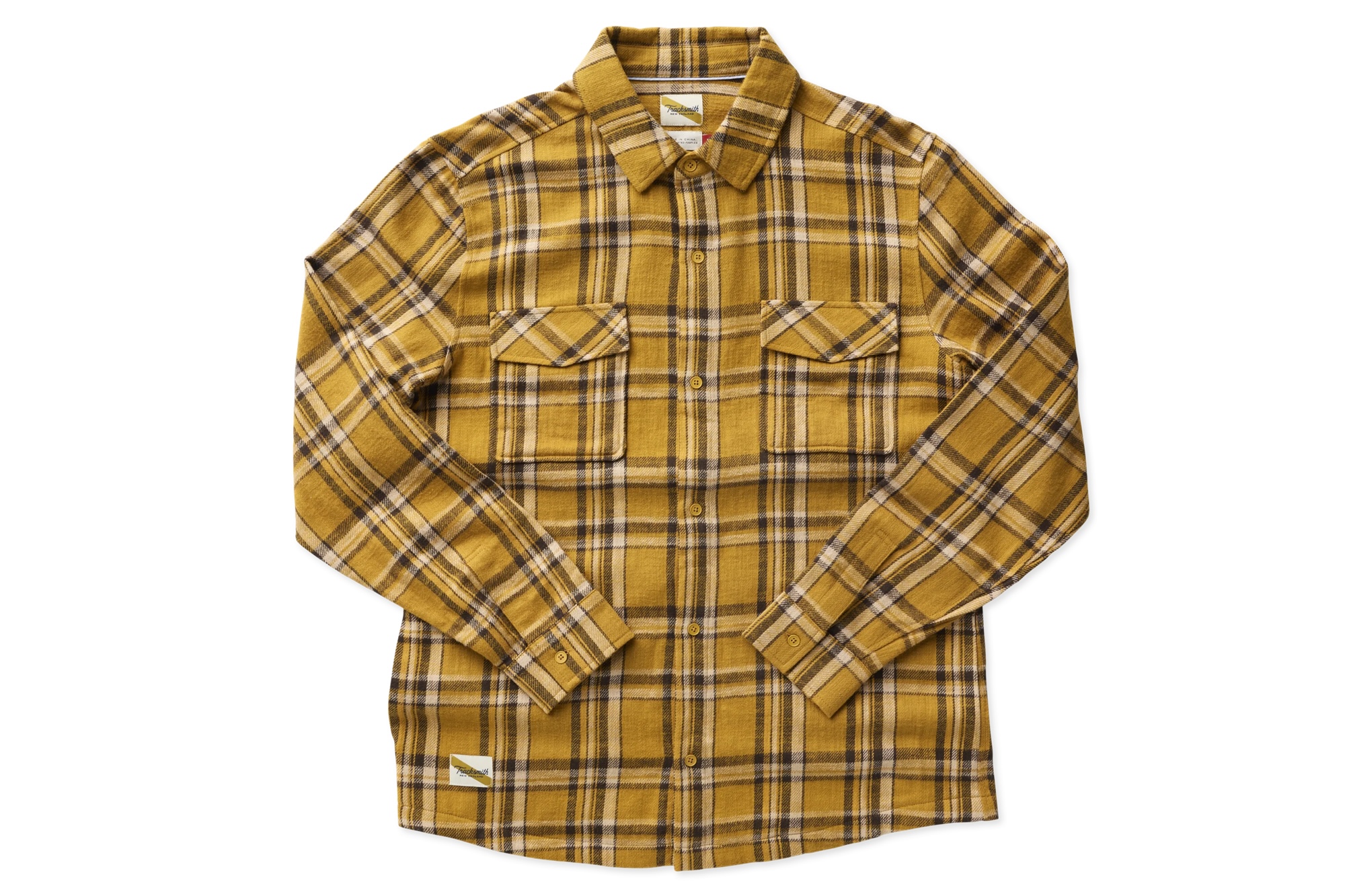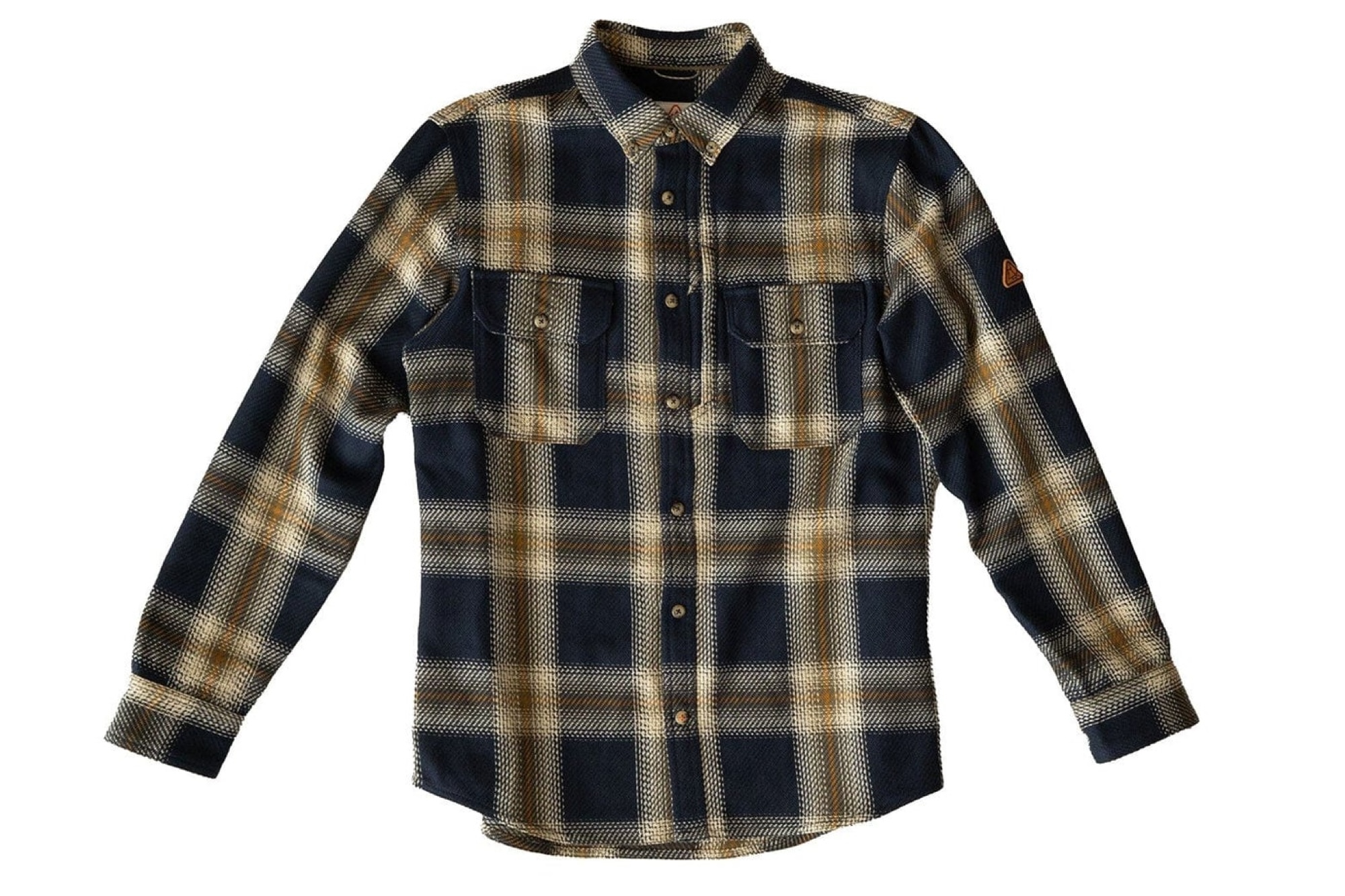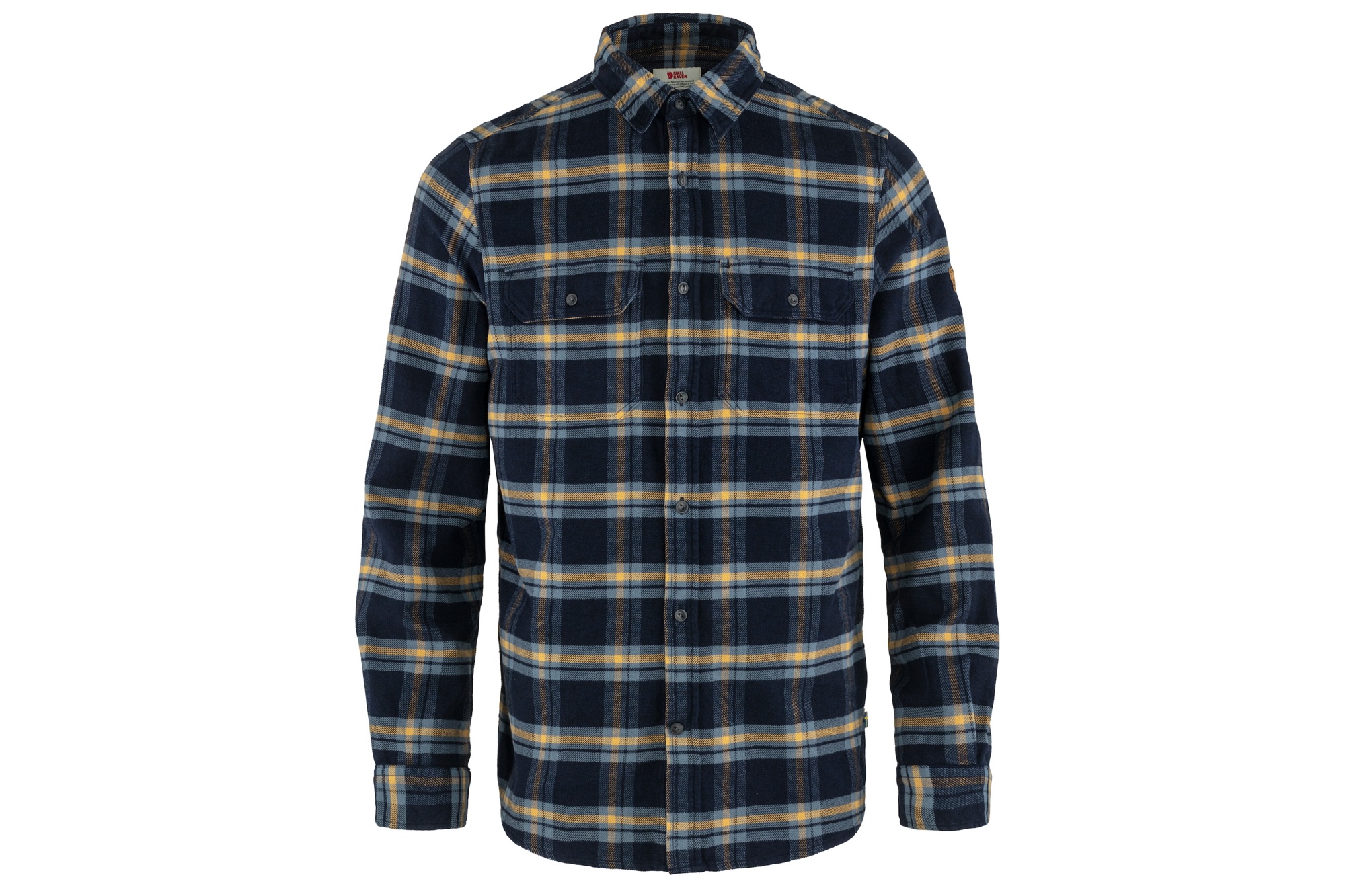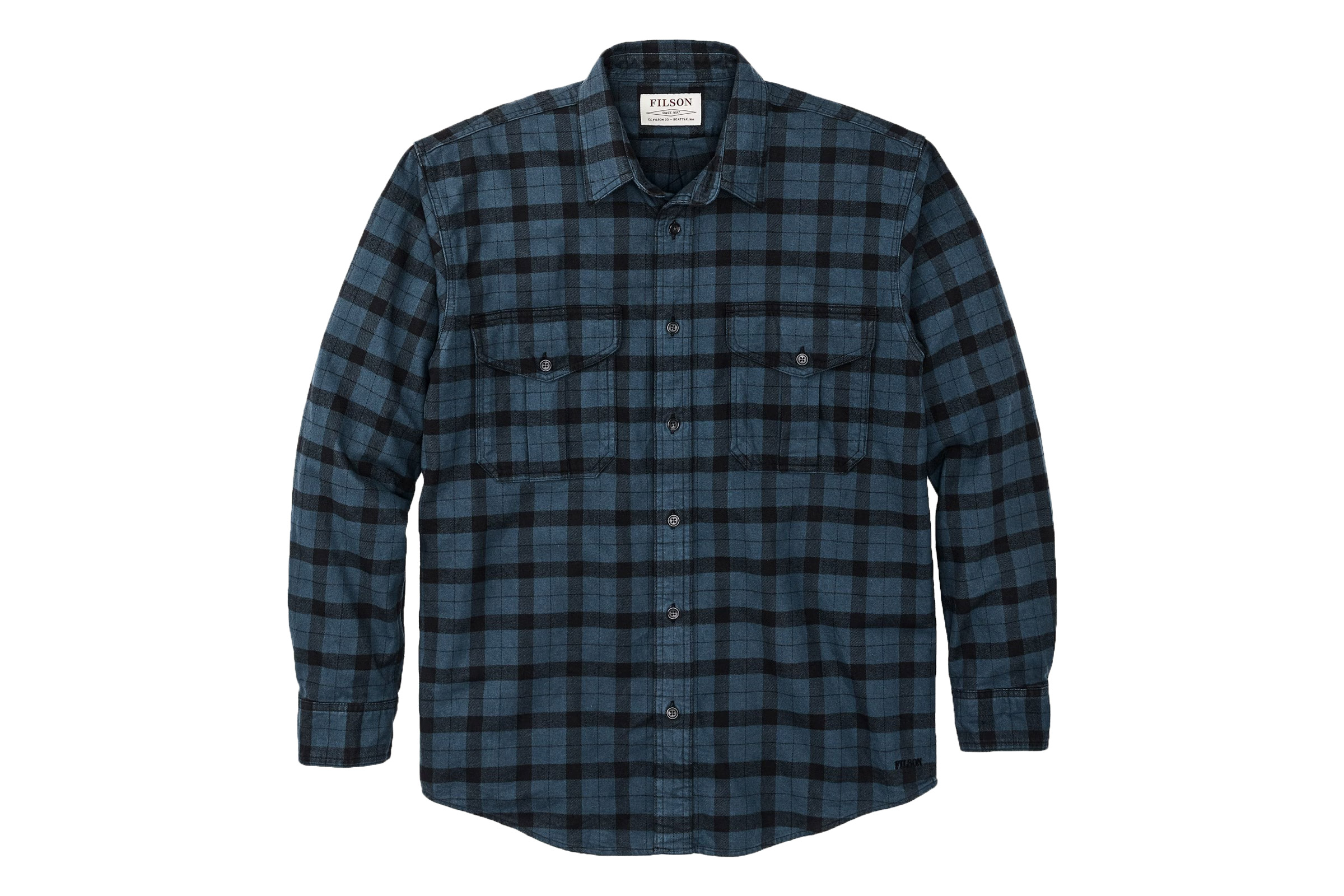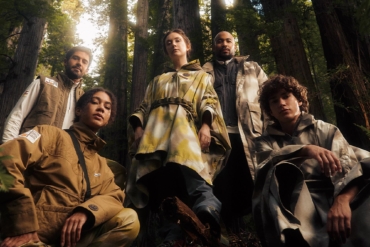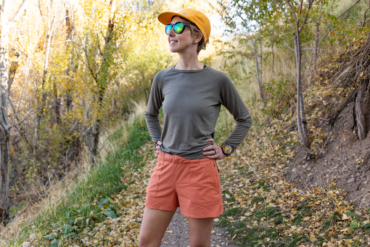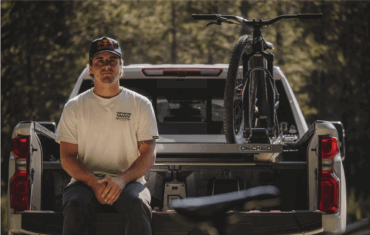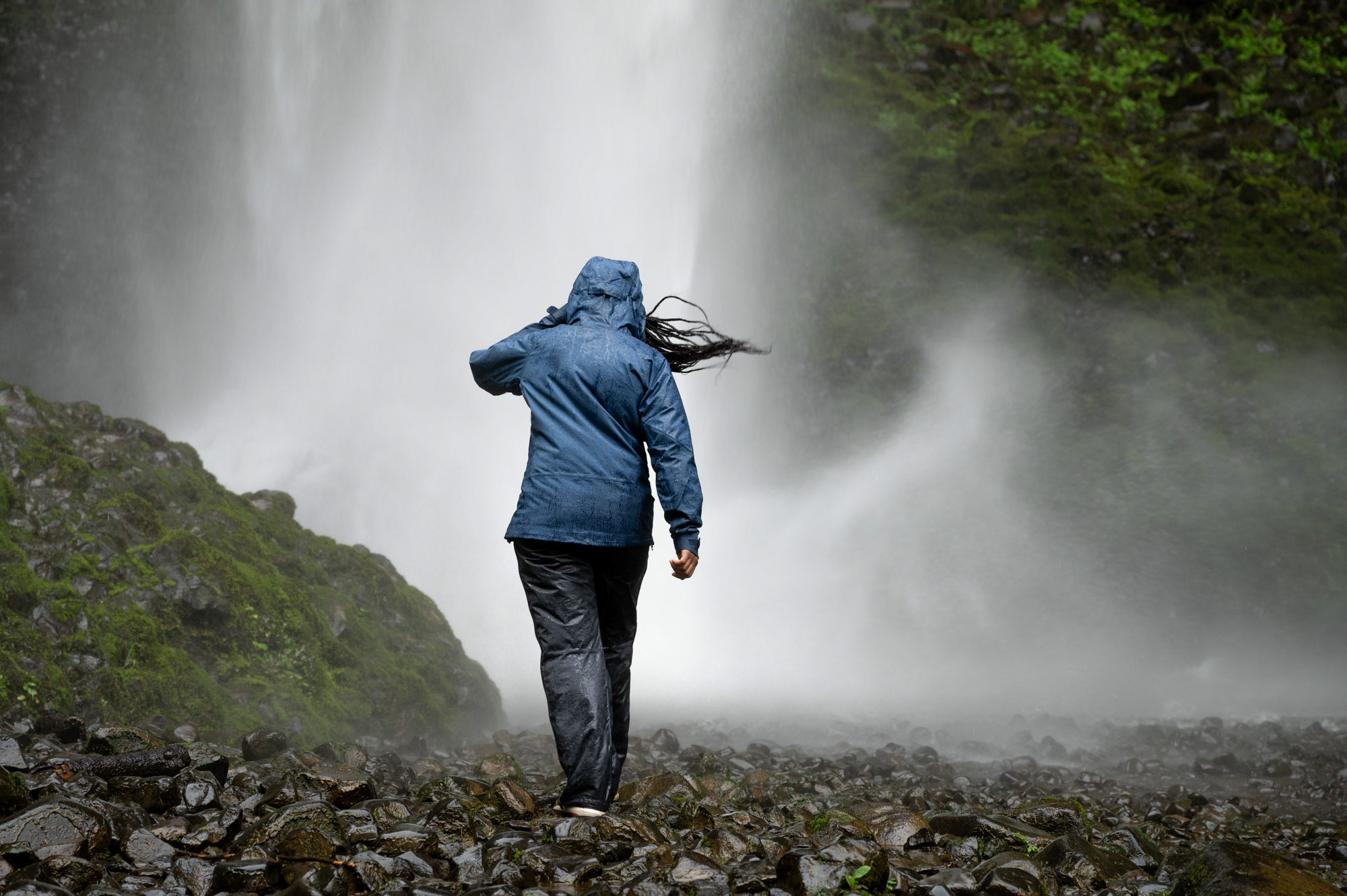Ask the GearJunkie staff what their favorite season is, and it would undeniably be flannel season — doing fall chores, warming up by the fire, and simply working from home. As hot days give way to cool mornings, we’re all looking forward to jumping into the best flannels out there.
To find the perfect cuts for 2025, flannel expert Steve Graepel combed through stores, scoured the internet, and spoke with brands to find the best options available. To test the flannels, we wore them at work, hammered through weekend chores, brought them camping, and occasionally shouldered them as we tossed our legs over a bike.
What makes the perfect flannel? We looked at materials, cut, and construction, excusing color and patterns. Color schemes are more personal, and we’ll let you pick what looks best in your wardrobe. From the do-it-all MuskOx Field Grand Flannel to the ‘buy-three’ Legendary Whitetails Buck Camp Flannel, we’ve got something to recommend to most everyone.
Editor’s Note: We updated our Best Men’s Flannels guide on May 6, 2025, to add a wide selection of new summer-ready flannels. Highlights include our new top pick, the MuskOx Field Grand Flannel, along with the luxuriously soft Pladra Workhorse Wool Flannel and the jacket-like Normal Brand Brightside Flannel.
The Best Men’s Flannels of 2025
MuskOx Field Grand Flannel
- Materials: 100% BCI approved cotton
- Fabric Weight: 278 g/m²
- Garment Weight: 1 lb., 1 oz.
- Fit: Appropriately roomy
- Best for: Wear it for chores or to the bar. If you just want one flannel to punch up your wardrobe, the MuskOx Field Grand will land it with a TKO
Pros
- High-quality Egyptian and U.S. sourced BCI cotton
- Milled and sewn in Portugal
- Built like a tank
- Fat loop to hang the shirt in the nape of the neck
- 13 solid and plaid patterns to choose from
Cons
- Not many. If it's not warm enough for you, check out the Grand Flannel, which punches in at 300 g/m²
Legendary Whitetails Buck Camp Flannel
- Materials: 100% cotton
- Fabric Weight: 144 g/m²
- Garment Weight: 14 oz.
- Fit: Relaxed
- Best for: Spring to fall everyday flannel for yard work and camping
Pros
- Fantastic construction at this price
- Double pleat on the back for extra flexibility
- Corduroy-backed sleeves and collar
- Work-oriented cut
- 45 different patterns available
Cons
- The collar loses form easily
- Not the most premium-feeling flannel
Pladra Workhorse Wool Flannel
- Materials: 70% wool, 20% polyester, 10% viscose heavyweight brushed flannel
- Fabric weight: 400 g/m²
- Garment weight: 1 lb., 2 oz.
- Fit: Appropriately roomy
- Best for: Classing up your wardrobe with wool, and durable enough to handle light chores
Pros
- Fantastic fit
- Soft and plush
- Fat, easy-to-use buttons
- Beautiful ombre pattern
- 400 g/m² fabric is deceptively light
Cons
- Some subtle scratchiness, but the softest, most wearable wool we’ve shouldered in this weight
Normal Brand Brightside Flannel
- Materials: Shell: 54% wool, 36% polyester, 10% other fiber; Body Lining: 100% cotton, Sleeve Lining: 100% polyester
- Fabric Weight: N/A
- Garment Weight: 2 lbs.
- Fit: Fitted
- Best for: Tailored like a shirt with the flexibility of a jacket
Pros
- Classy looking flannel lined jacket that wears like a shirt
- Seven color options
- Not cheap, but good value
- Stout locker loop
Cons
- Tailored fit binds under the arms, limiting the shirt to less active settings
- Third chest pocket is hard to access when the main chest pocket is buttoned
Faherty Legend Sweater Shirt
- Materials: 65% REPREVE recycled polyester, 30% Viscose, 5% elastane
- Fabric Weight: ~300 g/m²
- Garment Weight: 1 lb., 3 oz.
- Fit: Fitted, but very stretchy
- Best for: The ultimate weekender
Pros
- Softest flannel on the list
- Easy to care for
- 27 color patterns to choose from
- Incredibly comfortable
Cons
- Expensive! But often on sale
- Online mostly — though we’ve seen a few Faherty stores open nationwide
- Your partner may steal this shirt from you so you may need to buy two shirts
Other Flannels to Fill Your Closet
The five flannels above are our bar-none favorites when it comes to dressing for the weather (or the occasion). But that doesn’t mean there aren’t other excellent flannels out there. Since we’ve tested 100+ in our time, a handful of excellent alternates have risen to the top. Consider the 11 flannels below from both small and big brands to bulk out your closet this fall.
- Materials: 100% GOTS-Certified organic cotton
- Fabric Weight: 240 g/m²
- Garment Weight: 1 lb., 1 oz.
- Fit: Fitted with room
- Best for: Great multipurpose flannel for work or date night
Pros
- Long length fits tall sizes untucked and stays tucked in
- Great pedigree farm to factory
- Buttery soft double brushed cotton
- 100% GOTS-Certified organic cotton
- Hand cut and sewn in U.S.A.
- Great fit without binding
Cons
- Overstitched seams are exposed on the inside (not so much a ding as it is a fact)
- Occasional loose threads require pulling out the scissors to trim
- If you prefer to wear your flannel untucked, their shirts run long
- Materials: Double brushed organic cotton
- Fabric Weight: Unknown; feels in the 200 range
- Garment Weight: 1 lb.
- Fit: Regular fit. No pleats, feels tighter around the shoulders
- Best for: Subtle western styling and casual design is a fun shirt for after hours
Pros
- Attention to details
- Nice pearl snap closure, including three snap cuffs
- A light nod to western styling without committing full cowboy
Cons
- Though robust, it’s not as fluffy as other flannels on the list. It’s a good choice for a work flannel
- Fits snug behind the shoulders and under the arms
- Materials: 100% organic cotton
- Fabric Weight: 220 g/m²
- Garment Weight: 13 oz.
- Fit: Relaxed
- Best for: Everyday flannel for fall through spring
Pros
- Great value at less than $100
- Nice details like bar tacking and gussets
- Durable organic cotton twill fabric
- Collar backed with nylon
Cons
- Cuff buttons are snug even when buttoned with the outer button
- No pattern matching on pockets or flannel sides
- Materials: 100% organic cotton
- Fabric Weight: 190 g/m²
- Garment Weight: 11 oz.
- Fit: Relaxed trending fitted
- Best for: Chill activities but office friendly
Pros
- Great lightweight flannel option
- 5 subtle, earth tone colorways.
- Slim fit makes it suitable for the office
- 100% organic cotton
- Resists wrinkles well
Cons
- Fit favors athletic body types
- Cuffs are too snug to wear a modern GPS watch underneath
- Materials: 100% cotton
- Fabric Weight: 373 g/m²
- Garment Weight: 1 lb., 12 oz.
- Fit: Overshirt
- Best for: Quality oversized flannel to layer in fall or by itself in winter
Pros
- The very top shelf of flannel
- 11 oz cotton from Japan
- Attention to details
- Preshrunk
- Pattern-matched panels
- Made in California
Cons
- Expensive
- Not as plush as other flannels
- Lacks a locker loop
- Materials: 100% organic cotton
- Fabric Weight: Unknown
- Garment Weight: 14.5 oz.
- Fit: Relaxed fit
- Best for: Relaxing on weekends, Informal get-togethers
Pros
- Fantastic fit
- Great casual styling
- Stealth hand pockets are a nice addition
- All-gender silhouette
Cons
- One color option, fortunately it’s a good one
- Painted buttons are very thin and hard to manipulate
- Hidden chest buttons are impossible to use on the go
- Materials: 100% organic cotton
- Fabric Weight: 235 g/m²
- Garment Weight: 1 lb., 2 oz.
- Fit: Relaxed fit with good mobility
- Best for: Casual wear
Pros
- Plush and warm
- Bold colors are nice
- Often on sale
Cons
- Semi loose weave isn’t lofted like a traditional flannel
- Buttons are small for a heavyweight flannel; It works because the material is so soft
- Materials: 40% GRS certified recycled Seawool polyester, 60% cotton
- Fabric Weight: 264 g/m²
- Garment Weight: 1 lb., 4 oz.
- Fit: Relaxed but feels tight in shoulders; Expect some shrinking
- Best for: Casual wear and outdoor activities
Pros
- Four pockets work with the shirt, not against it
- Ventilated underarm gussets
- Button shanks are wrapped for extra reinforcement
Cons
- Fits snug under the arms
- Low loft, slick interface doesn’t insulate as much as we would like in a flannel to
- Runs large, will shrink. Helpful size chart to confidently buy on line
- Materials: 100% BCI approved cotton
- Fabric Weight: 212 g/m²
- Garment Weight: 15 oz.
- Fit: Appropriately roomy
- Best for: Cooler-weather axe swinging, coffee drinking
Pros
- Classic flannel
- Attention to detail
- Flawless seams
- Comfortable, relaxed fit with plenty of room to move
Cons
- Very little to fuss about
- Buttons are small for the material weight
- Materials: 100% U.S. cotton
- Fabric Weight: 220 g/m²
- Garment Weight: 14.5 oz.
- Fit: Fits normally
- Best for: The Boca is tough-wearing flannel that’s American enough to make a bald eagle shed a tear of Miller Lite
Pros
- Entirely made in the USA
- Durable weave
- Horn buttons made in Pennsylvania and notched to protect against abrasion
- Twin chest pockets
- Pattern-matched front and back panels at the side
Cons
- Would like to see a locker loop on this workhorse of a shirt
- Cuffs could use a 45 degree notch to reduce catching
- Materials: 100% cotton
- Fabric Weight: 275 g/m²
- Garment Weight: 1 lb., 4 oz.
- Fit: Fits normal if you size down
- Best for: The provenance of western American workwear, it is up for any task and wears casually around town
Pros
- Durable cotton and construction
- Classic styling
- Pleated chest pockets
- Several color options available
Cons
- Expensive; there are better options in this price range
- Would like to see the armholes flat-felled
- Sizing is one size too big

Men’s Flannels Comparison Chart
| Flannel | Price | Materials | Fabric Weight | Garment Weight | Fit |
|---|---|---|---|---|---|
| MuskOx Field Grand Flannel | $154 | 100% BCI-approved cotton | 278 g/m² | 1 lb., 1 oz. | Appropriately roomy |
| Legendary Whitetails Buck Camp Flannel | $35 | 100% cotton | 144 g/m² | 14 oz. | Relaxed |
| Pladra Workhorse Wool Flannel | $200 | 70% wool, 20% polyester, 10% viscose heavyweight brushed flannel | 400 g/m² | 1 lb., 2 oz. | Appropriately roomy |
| Normal Brand Brightside Flannel | $188 | Shell: 54% wool, 36% polyester, 10% other fiber; Body Lining: 100% cotton, Sleeve Lining: 100% polyester | N/A | 2 lb. | Fitted |
| Faherty Legend Sweater Shirt | $178 | 65% REPREVE recycled polyester, 30% Viscose, 5% elastane | ~300 g/m² | 1 lb., 3 oz. | Fitted, but very stretchy |
| Vermont Flannel Co. Classic Flannel Shirt | $88 | 100% GOTS-Certified organic cotton | 240 g/m² | 1 lb., 1 oz. | Fitted with room |
| Stio Slipstone Midweight Flannel | $115 | 100% GOTS-certified organic cotton | N/A | 1 lb. | Regular fit |
| Jetty Breaker Flannel | $70 | 100% organic cotton | 220 g/m² | 13 oz. | Relaxed |
| Mammut Trovat Long Sleeve | $100 | 100% organic cotton | 190 g/m² | 11 oz. | Relaxed trending fitted |
| Freenote Cloth Benson | $325 | 100% organic cotton | 373 g/m² | 1 lb., 12 oz. | Overshirt |
| Tracksmith New England Flannel | $180 | 100% organic cotton | Unknown | 14.5 oz. | Relaxed fit |
| The North Face Arroyo Flannel | $90 | 100% organic cotton | 235 g/m² | 1 lb., 2 oz. | Relaxed fit with good mobility |
| LIVSN Benchmark Field Flannel | $199 | 40% GRS certified recycled Seawool polyester, 60% cotton | 264 g/m² | 1 lb., 4 oz. | Relaxed but feels tight in shoulders; Expect some shrinking |
| Fjällräven Ovik Heavy Flannel | $110 | Double-brushed organic cotton | 212 g/m² | 15 oz. | Appropriately roomy |
| Devium Boca Flannel Shirt | $158 | 100% U.S. cotton | 220 g/m² | 14.5 oz. | Fits normal |
| Filson Alaskan Guide Shirt | $145 | 100% cotton | 275 g/m² | 1 lb., 4 oz. | Fits normal if you size down |
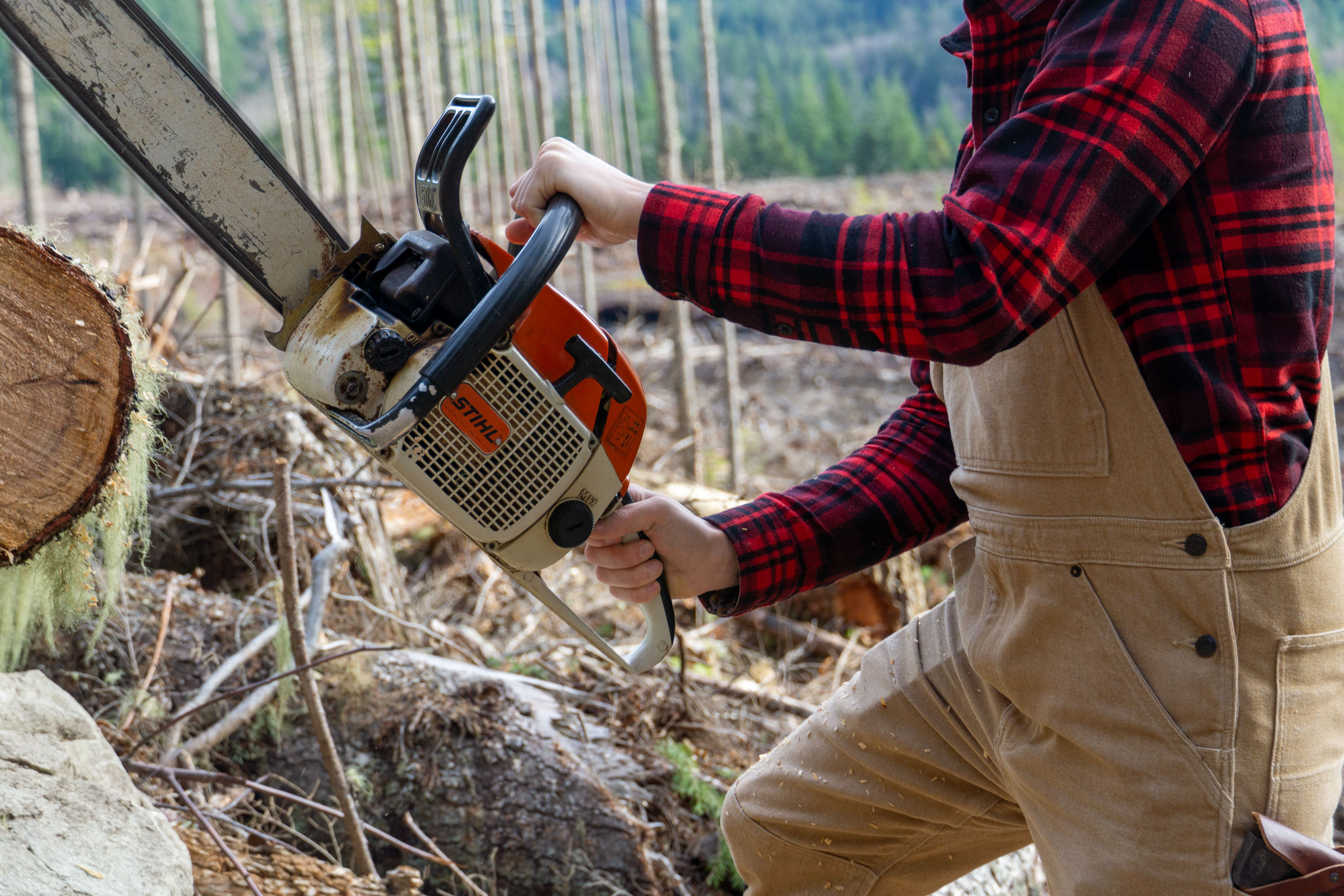
How We Tested the Best Men’s Flannels
At GearJunkie, flannels are an extension of our everyday lifestyle. A shirt, a sweatshirt, a jacket — flannels are the most flexible garment we own. Unlike a tent, camp stove, or a pair of boots, we shoulder flannels daily, allowing us to put the brushed twill through the paces. We tested flannels at the office, and through the weekend, grinding through chores like cleaning the garage, raking leaves, or simply walking the dog on cool summer mornings.
Cozy in coach and a fashionable way to layer up, we always pack at least one flannel for travel. They’ve had our backs on flights to Germany, Italy, France, Slovenia, and Japan, as well as transcontinental flights across the States. In warmer climates, we’ve flanneled up on cool nights on the Dariense Isabelia ridge in Nicaragua and high up on the Colombian Coffee Triangle.
Our Testing Process and Testing Grounds
To test flannels, we always start with how the material feels in the hand. We rate it for plushness, softness, and durability. We look at the fiber material, weave, and brushed finish. The material choice and finish are indicators of how the manufacturer envisions the flannel should be worn and used, and it points us in the direction of how they should be sewn and in the end, how we should test the shirt. We want to see if the two align and how they stack up to the marketing story manufacturers share online.
During real-world consideration, we aim to wear flannels for what they were made to do. For example, hard work-oriented flannels are worn doing tasks that are hard on a shirt. Specifically, we want to know how it accommodates range of motion and if it holds up.
We want to know if we can swing a hammer or reach boards from the top shelf without exposing our torso or restricting motion in the arms. We also test it for snagging and durability. Does the flannel catch on wood, metal edges, or granite shards? Does it collect a lot of dust and grime?
Finally, we shoulder the flannels and evaluate them for fit. The best material and construction can’t fake a good fit. We test it for mobility and proper length. Does the shirt bind under the arms? Are the pleats and gussets appropriate? Does a straight-cut work without pleats? Are the arms or hem cut at a proper length or do they ride up when reaching? How does the shirt taper in the torso and arms?
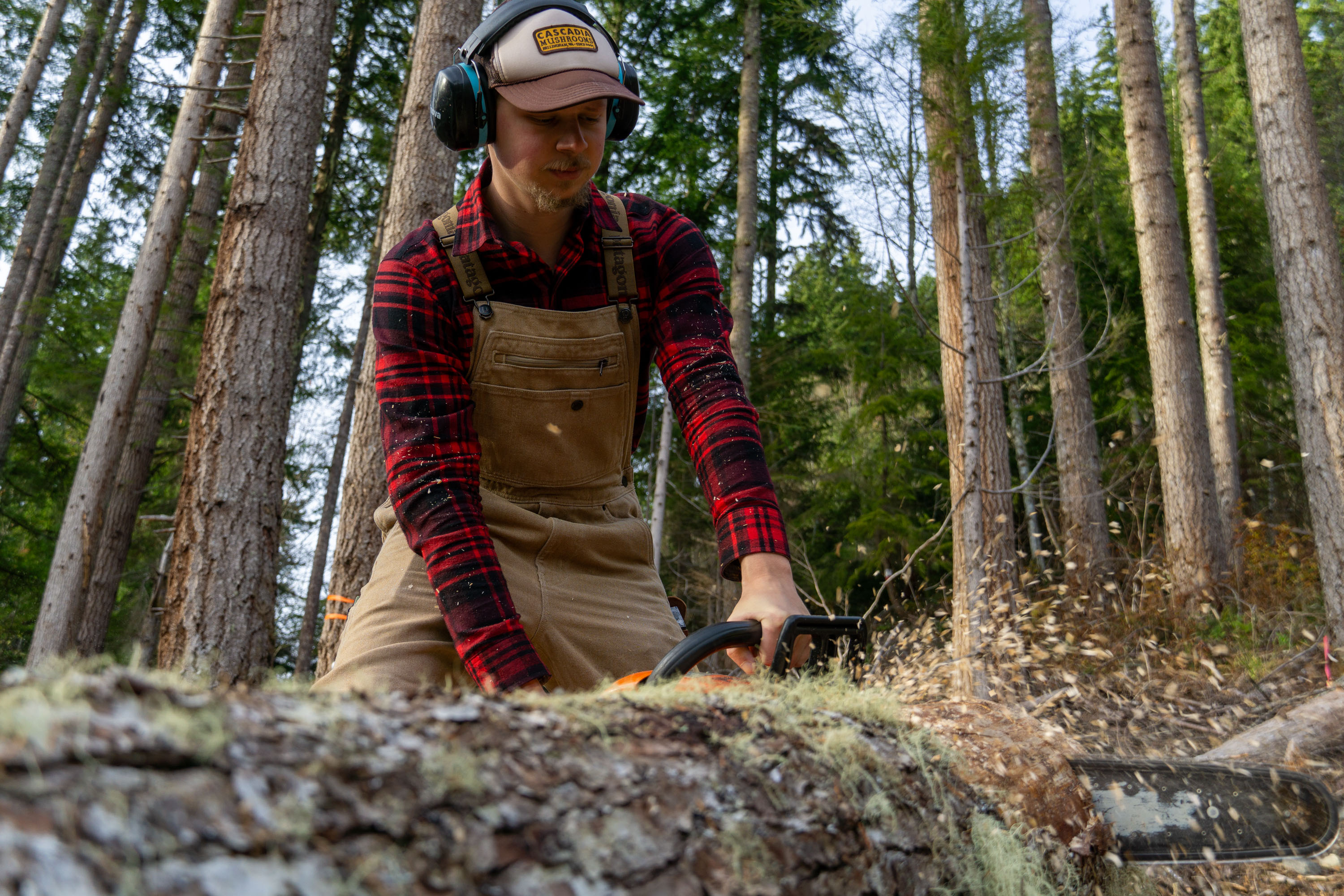
Our Expert Testers
Steve Graepel has been leading the men’s flannel buyer guide since 2015. Over the span of 10 years, Graepel has seen over 200 flannel shirts, rigorously testing 120 flannels. Graepel has worked at GearJunkie as a contributing editor since 2009, testing everything from packrafts, to bike bags, sleeping bags, winter boots, and trail runners. His latest beat is travel pants and flannels. Before his time as a fashion blogger, he wrote for Travel Idaho, National Geographic Adventure, Patagonia’s Tin Shed, Trail Runner, and Gear Patrol.
Graepel has researched and tested flannels extensively — traveling, working, and camping in the high alpine desert of Idaho, Montana, and Utah and traveling abroad in a variety of environments, including Europe, South America, and Asia. He continues to long-term test flannels year-round and searches for anyone who will listen to his yarns testing the brushed twill.
In 2020, we saw 47 flannels and listed 15 flannels on our men’s buyers guide. In 2021, we tested an additional 20 flannels, highlighting nine new flannels on our list. In 2022, we saw an additional 20 flannels, adding 12 new flannels. 2023 was a big year, where we created a newly minted seasonal heavyweight edition of our flannels buyer’s guide, adding nine new flannels. For the fall of 2024, we saw 20 new flannels, adding six new flannels to our fall buyer’s guide. In the winter of 2025, we tested 20 flannels and added 12 to our winter edition.
Each year introduces new styles and materials, and we try to reflect the best on the market of that year. Some stalwart flannels remain on the list, year after year. They are either so good, or so good of a deal, that they are tough to topple.
Flannels aren’t hard, but their simplicity makes it important to understand the details of a standout shirt. To keep a finger on the pulse, we read reviews from top sites and contact manufacturers directly. Steve Graepel has the owners of several companies on speed dial, and has had conversations with manufacturers and mills from around the world. It’s not uncommon for manufacturers to reach out to GearJunkie before they release a flannel to get a sense of the new lineup.
These relationships allow us to stay up to date on what makes flannels better every year, and keep an eye on sleeper flannels that just don’t have the marketing budget to get mass attention.
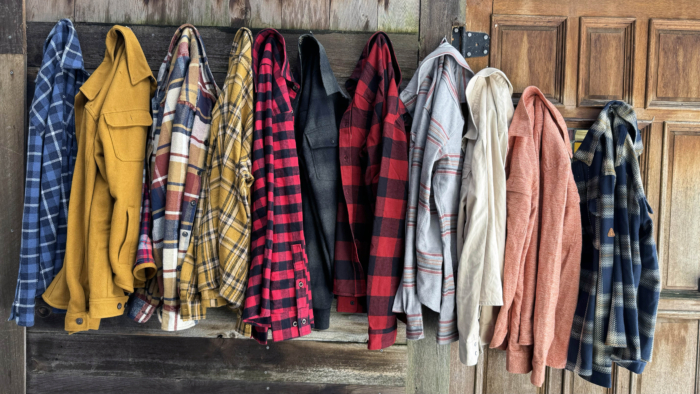
Buyer’s Guide: How to Choose a Flannel Shirt
Materials
Wool used to own the flannel scene, and it has a lot of merits. It retains warmth when exposed to moisture, resists odors and UV light, and can block the wind. We love what we saw in the Normal Brand’s Brightside overshirt, which delivers all of these qualities with its heavy wool material.
While the Brightside is a little scratchy on the outside, it’s lined with a soft cotton flannel. For a softer unlined wool, consider a wool blended with synthetic. Pladra’s Workhorse Wool weaves in polyester with Viscose and feels very wearable against the skin and pumps up the durability. But there are other materials worth considering.
Cotton can be buttery soft and an obvious choice to wear next to skin. MuskOx and Vermont Flannel Co. both use high-end cotton that’s soft as mink. But not all cotton flannels are brushed to this extent. Freenote Cloth’s Benson is lightly brushed and feels rougher. This makes it better for hardwearing activities in the yard or at the shop.
Some cottons are sourced from organic or Better Cotton Initiative (BCI) approved cotton fields. No synthetic pesticides or chemical fertilizers can be used in the cotton to achieve the rank of “organic cotton.” The Vermont Flannel Co. Classic Flannel Shirt and Fjällräven’s Ovik Heavy Flannel both use organic cotton.
BCI-approved cotton meets sustainable standards that minimize pesticides, boost water conservation, and support better working conditions for farmers. Our top choice is heavyweight flannel from MuskOx sources BCI cotton. Either way, meeting either of these standards costs more money to achieve and the cost is passed onto the buyer. Expect to pay a little more for shirts that list either of these certifications.
If you break a sweat in flannel — say, mountain biking, skiing, or running — we recommend a synthetic flannel. They are easy to care for and can be thrown in the washer and tumbled in the dryer. Faherty’s Legend is incredibly plush, but likely too nice to want to get out in it. For outdoor activities, we’d recommend LIVSN’s Benchmark Field Flannel synthetic blend for those who live and breathe the work-hard/play-hard lifestyle.

Fit
Like any shirt, flannels are offered in a variety of fits, from athletic and tailored to grandpa-style. If you prefer a tidy look with a slimmer athletic fit, Mammut’s Trovat will be a good choice. But it can be a tradeoff with mobility. Without Lycra woven into the fabric, gussets, or mechanical weave, a tight, form-fitting flannel can bind behind the shoulders. Shirts like Filson’s Alaskan Guide get around this by adding a pleat between the shoulders.
On the other end of the spectrum, Freenote Cloth’s Benson is oversized and has no pleating. The roomy cut still allows great mobility to reach and work without feeling too big.
When making a purchase, let your use case guide you to the right flannel fit. And if it’s a work shirt, consider sizing down for everyday wear. As an example, Filson work shirts are typically sized just short of Arnold Schwarzenegger. We always have to buy one size down when looking at Filson. Fjallraven’s flannel shares a lot of the same merits we like about Filson, but unlike Filson, the off-the-shelf fit is spot on without sacrificing mobility.
Note that this review covers the best flannel shirts for men. Looking for a women’s flannel? We have another Flannel Buyer’s Guide specifically for Women.

Fabric Weights
Short for grams per square meter, g/m² is the weight of one square meter of fabric. Generally the heavier the weight, the thicker the material will be, the warmer that flannel will likely be. We generally follow the same ratings as we use in base layers.
- Lightweight flannels fall under 150-190 g/m²
- Midweight flannels sit between 200-250 g/m²
- Heavyweight flannels weigh over 250 g/m²
For fall, we share a range of flannel options. As we enter the dark days of winter, our flannel guide shifts on mid- and heavyweight flannels. At just under 200 g/m², Mammut’s Trovak sits as our lightest-weight shirt. We can dressed up the Trovak with a jacket and wear it to work. On the other end sits the Benson, which uses a stout 370 g/m² wool blend and is supremely warm.
The numbers game isn’t hard and fast. The brushing creates loft, which gives the flannel more warmth. If you have doubts and can’t find evidence in the reviews, it is always best to try a shirt on and get a feel for the material.
A heavier fabric doesn’t imply the material will be softer — which the Benson, is not. That soft, velvety feeling comes from brushing the material, giving it that lofty plush nap. A fabric with more nap can also be warmer than a fabric without it. The raised fibers trap air warmed from your body and work best as an insulator when worn under a jacket that can keep that warm air from flushing away.
Our top flannel from MuskOx takes a heavyweight flannel and brushes it until it almost achieves a soft, comfortable nap.

Closure Style
Flannel closure is a contentious debate at GearJunkie, and many editors have a soft spot for snaps. Often seen on western-style shirts, snaps hold well and are quick and easy to get in and out of. Granted, we are an active crew of reviewers who wear our flannels on runs and rides. The western-style flannel from Stio closes with pearl snaps.
While we love the usability of snaps, they can be problematic. Snaps disrupt the material by punching holes through the placket — that strip of material that runs dead center down the shirt. In rare cases, snaps can pull through, which we’ve experienced with a snap-style shirt. To add durability, most snap-style shirts punch through doubled-over fabric.
“If it ain’t broke, don’t fix it” — the button has been tried and true for some 5,000 years. Most buttons are constructed from hard plastics, though Devium and Freenote use horn. Tracksmith closes with metal buttons. Regardless of materials, we prefer big buttons for heavier materials, which is one more reason to consider Devium’s Boca. Its horn buttons are custom-made in Pennsylvania and are the size of a penny.

Construction
While quality materials matter, the construction of the shirt is what often defines a quality shirt. The best will have flat-felled seams that roll the opposing material together and tack the seam down with a double stitch. The result hides all the cut edges, leaving a clean-looking, durable shirt inside and out. These shirts will often be double- or triple-stitched in high-stress zones, like the shoulders and sides.
While more durable, flat-felled seams can make a shirt bulkier, not every mill can pull off this level of construction. So flat-felled flannels tend to be more expensive.
Pladra, Fjallraven, and Freenote use a flat-fell seam and vary the stitch count for extra durability where you need it most.
Many quality shirts use a more common overlock or surge stitch, where the two opposing panels are butted together with an overlock stitch, leaving the seam’s edge raw on the inside. Using an overlock stitch is a much easier construction method, and since most sewing houses can do it, the cost is (usually) reflected in the affordable price. Vermont Flannel Co.’s Classic Flannel sews together high-quality fabric with overlocked seams.
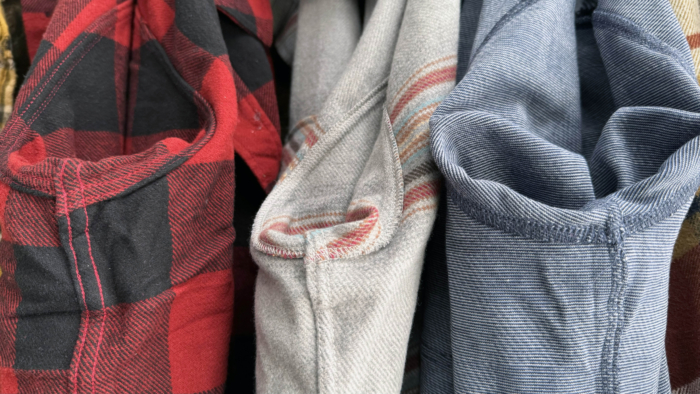
The downside is that some overlock stitches are left unfinished. Exposed, they can rub against the body, snag, and fray, which eventually could pull on the surrounding stitching.
Seams are both art and science, so don’t read these as hard and fast guidelines. Overlock stitching can also be a valid choice for lighter-weight fabric. The seams allow stretch and pair well with lightweight fabrics, and it makes sense.
A good compromise is to flat-lock the overstitching. It doesn’t hide the seams, but the overstitching is tacked down out of the way. This makes the seams less bulky than fully felled seams and costs less to sew. More importantly, it can be more comfortable and practical when joining heavyweight fabrics that creep over 300 g/m². Most flannels overstitch their flat-locked seams in the armpits, and Faherty sews all its overlock stitches flat.
When buying a shirt, look at the construction details. A well-constructed shirt will cost more in the short term but will last for years.
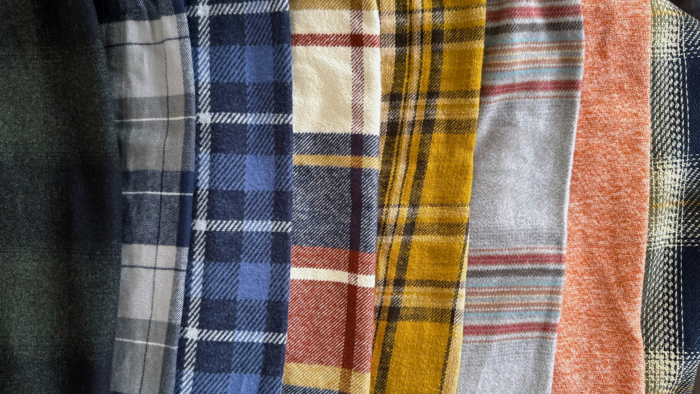
Price & Value
With a general range between $35 and an eye-watering $325, there’s a wide spread when it comes to flannels and a good bit of nuance in between those figures. Not only do different materials demand higher price tags, but we’d argue that construction methods augment the price just as much — if not more in some cases. Knowing what you’ll be wearing the flannel for the most will go a long way in choosing the best option for you.
Budget
Like everything these days, the price of flannels has been creeping up over the last few years. But you can still get into a flannel without having to spend a lot of cash. At just under $40, Legendary Whitetails is an affordable entry price point to give flannels a go without sacrificing quality construction. For a few bucks more, Jetty offers a mid-weight deal in the Breaker at $70, which is a great choice for more casual, everyday wear.
Mid-Tier
The mid-price of flannels seems to fall in around $90 (though we acknowledge we have a bump in shirts listing between $100 and $140). Just below will get you into most mountain-style flannels from the big stores, but there can be a slew of uninspiring shirts in this range that lean on their brand recognition, bright patterns, and color schemes to take your cash.
Here too, you get what you pay for, and it’s a good place to start looking at materials and construction to ensure you are indeed getting good value. Premium construction methods, like hand-sewn, double or triple stitching, and eco-conscious product development, start to tack onto the bottom line. Fjällräven’s Ovik Heavy Flannel ($110) sits squarely in this range, and we find it to be one of the best values on the market. It’s a fantastic flannel that goes toe-to-toe with the best.
Premium
Better materials and pedigree start to pry the wallet open. Unless there’s a backstory to support that extra cost, shirts priced over $150 leave you wondering if you are paying for someone’s mortgage. Topping out just over $200, we do feel that the materials and attention to detail Pladra brings with its Workhorse Wool are of exceptionally high quality and warrant the expense. A big part of that is the wool. If that’s simply out of budget, consider the cotton Workhorse.
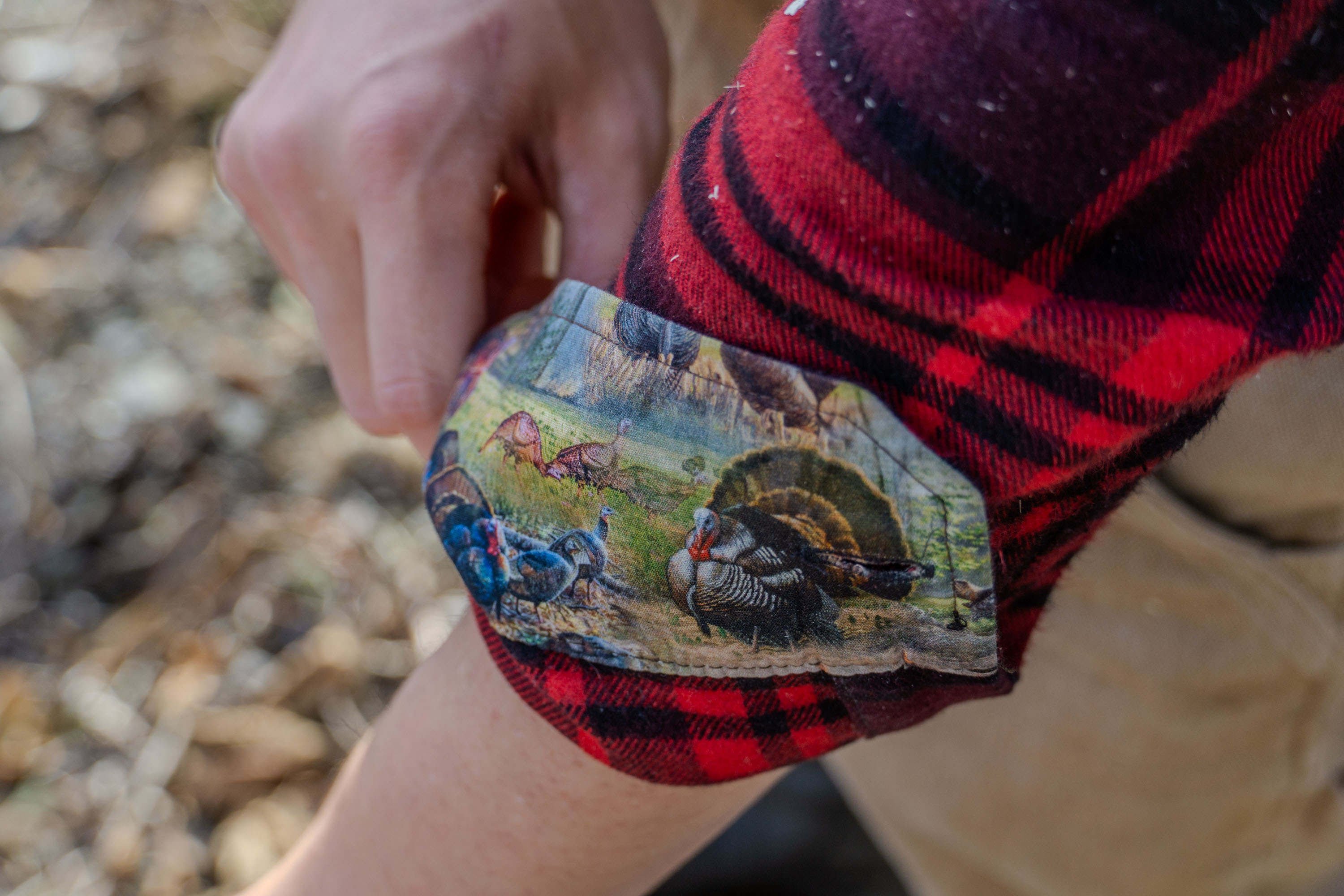
Frequently Asked Questions
Traditionally a brushed twill made from wool, the original flannel was woven to keep Welsh sheep herders warm while tending the flock on temperamental winter days. Nowadays, the term flannel has expanded into cotton, synthetic, hemp, and blends with stretchy fibers. What unequivocally defines flannel is the brushed surface that lofts the yarns into a heat-trapping nap that gives it that super soft feel to the touch.
True flannels start from twill — a diagonally woven pattern like you find in jeans. Either the front or back can be brushed, giving it a soft insulating nap. To give a flannel that lofty fluffy feeling, a metal brush works the material’s surface, mechanically teasing the fibers until lofted into that fuzzy surface that traps air.
Flannel starts with the weave of the fabric. A more tightly woven fabric, like we see in MuskOx, will resist tears and last longer.
But the flannel we know and love is achieved by brushing the fabric to tease fibers out, which act like an insulator. The rub is it can compromise durability. In short, the fibers are broken and become more prone to catching dust and grime, which can continue to break down the fibers. Contrastingly, lightly brushed flannels tend to be more durable. They don’t collect as much grime or catch as easily on wood splinters or metal edges.
Flannel comes in all forms these days. It’s unfair to box a shirt in or out of the flannel club. It might help to think of the base material sitting on a brush scale. At the far end is a smooth-faced, durable shirt. On the other is a soft and plush shirt.
Our top flannel pick from MuskOX is a buttery soft flannel made from 278 g/m² organic cotton. The shirt is brushed on both sides and exudes flannel. The fabric is tightly woven and thick, ensuring year after year use. For mid-weight, lightly brushed fabrics, like those found in Devium’s Boca will serve as better work shirts over, say, Proper Cloth’s Jackson flannel (not on this list), which brushes loosely woven yarns that get caught on sharp edges.
Flannel is a lofted fabric — regardless of the pattern. That fabric can come in a variety of solids and patterns, including the cross-hatched patterns, originally dating back to the Scottish culture to distinguish families and clans, we call plaid.
Start with how and where you want to use it. If you intend to wear your flannel outside or as a jacket, consider a wool or insulated flannel. Normal Brand’s Brightside is great at blocking wind and light rain. We liked Devium’s front pockets and the low nap is very durable, but the cotton flannel is best worn on cool, dry days. Tracksmith’s New England is great for around town but lacks durability for hardwearing tasks.
We love the New England flannel for its overall softness, quality, and general easy-wearing approachability. For more active pursuits, we liked how LIVSN’s synthetic-blend wicks moisture and has utility pockets that are user friendly. But neither are as durable as Filson’s Alaskan Guide’s nearly bulletproof cotton flannel. The hard-tack surface is also the least plush shirt on our list.
Some work flannels, like those offered by Filson, can be oversized. We found the work-inspired Boca from Devium fit spot-on. In general, you will be happier if you try them on before you buy. If you can’t, it’s worth sizing down for a more tailored fit — especially when buying anything from Filson, which generally runs one size larger.
Like a tool in your toolbox, the best flannel will be the flannel that meets your needs. Take stock of how you want to use it, and then use our guide to find the best option for you.
We update our flannel buyer’s guide for winter with more robust options. The warmest shirt on this season’s list is from the Normal Brand. The wool is lined with brushed flannel and traps heat like down. The fit is tailored though, so it doesn’t pull chores as well as Benson.
For a more work-friendly warm shirt, we like Pladra’s Workhorse Wool. The 400 g/m² is lighter than you think and wears well either tucked in or out and is lofted to trap heat. The cotton 278 g/m² found in MuskOx is plush and comfortable, finding a sweetspot in wearability and warmth
If you want to stay warm in wet weather, reach for synthetic, and that’s where the LIVSN Benchmark shines.
With it’s über-soft brushing both inside and out, we loved Faherty’s Legend. It became the benchmark to test all other flannels for softness.
A less expensive option is Vermont Flannel Co.’s Classic Flannel. The fit is more relaxed and the details aren’t quite on par with our top tier flannels, but the material is fantastic and more durable. Plus it’s half the price. For top value, you can not beat flannels from VFC.
How long a shirt lasts is a combination of materials, construction, and use.
If taken care of, quality materials sewn together with flat seams will last for years. MuskOx, Devium, and even the stylishly tailored Pladra are all highly durable shirts. Any of these shirts are solidly constructed and will serve you well.
How often you wash it depends on how you wear it. Using it daily as an overshirt, where you aren’t sweating directly against the fabric, gives you a few wears before you need to wash it. If you work out in it or are putting it to task with a shovel on a pile of dirt, you should wash your shirt.
Follow the instructions on the garment. While synthetics can be washed and dried on low, we recommend air-drying cotton shirts. They can shrink.
Wool shirts might need special care, like dry-cleaning. Never dry a wool shirt in the drier. The fibers can shrink significantly making it essentially unwearable. Our top (and only) wool shirt is a poly-blend and is washer friendly. While it says you can tumble dry the shirt on low, we still recommend drying it on a flat surface.
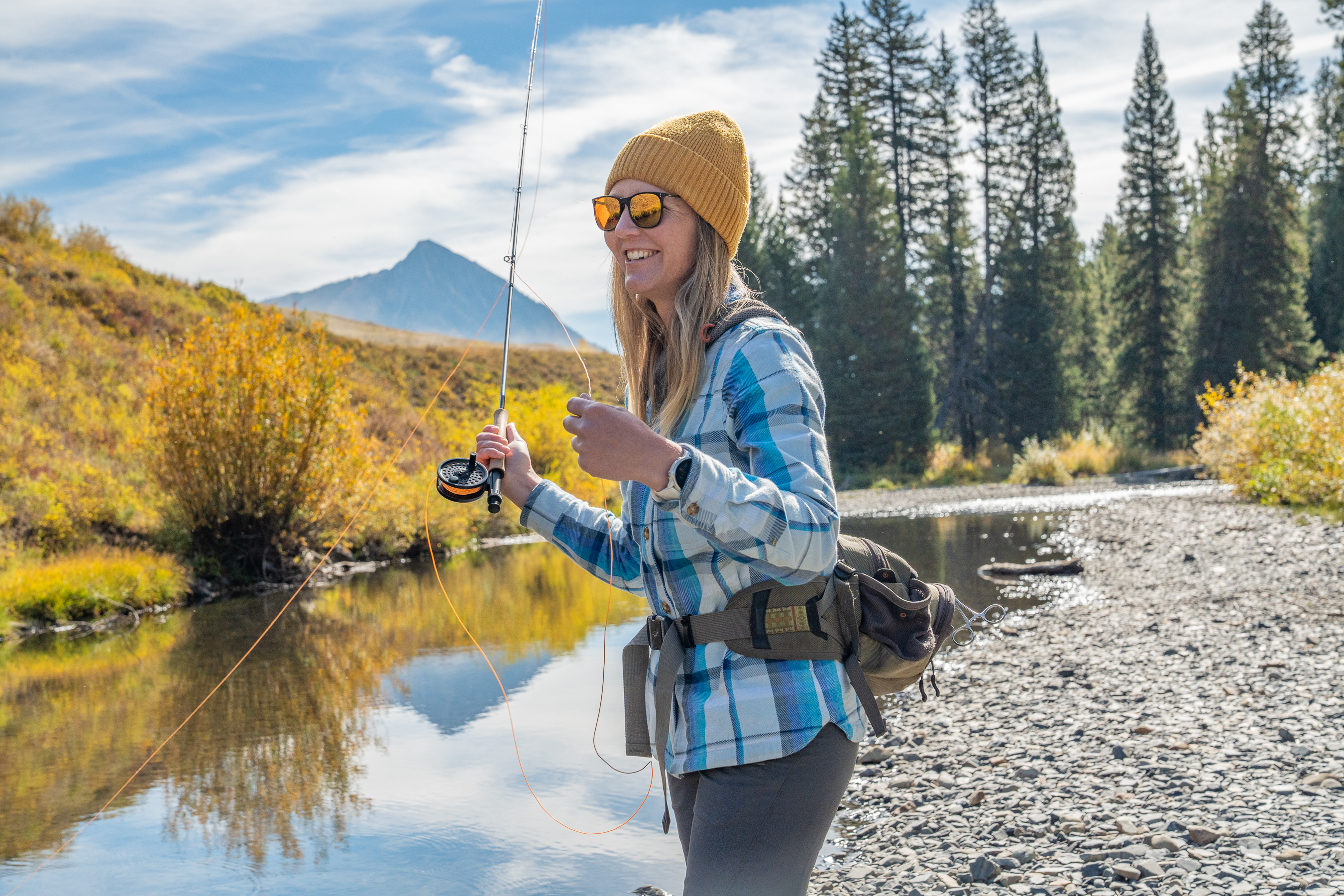
The Best Women’s Flannel Shirts of 2025-2026
We found the best women’s flannel shirts for every budget including top picks from Patagonia, Stio, Outdoor Research and more.

The Best Hiking Pants for Men of 2025
We tested the best men’s hiking pants from Outdoor Research, REI Co-op, Fjällräven, Black Diamond, and more to help you find the best option for your needs and budget.




